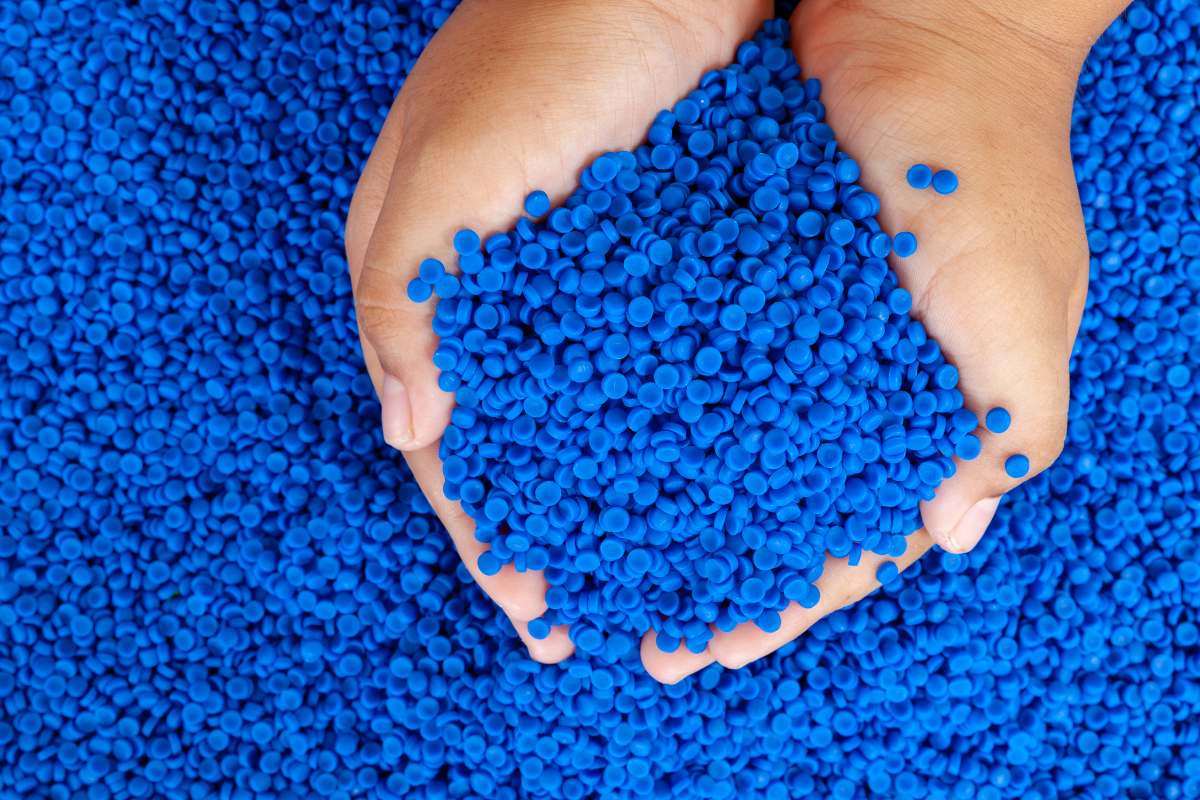Is ABS Plastic Safe
Basics of ABS Plastic
ABS plastic is a very unique and versatile material. It belongs to class of thermoplastics. Mainly there are three basic components associated with ABS plastic in its composition. These include acrylonitrile, Butadiene and styrene. Each one of these components exhibits specific properties and characteristics. Polybutadiene provides toughness in the ABS plastic while styrene offers the characteristics of rigidity. The presence of acrylonitrile imparts the properties of chemical resistance in the ABS plastic. These unique and versatile properties make the ABS plastic very suitable to be utilized in numerous applications.
The applications range from consumer goods to auto industry parts and from electronic components to children toys. The process of molding and extrusion of ABS plastic can be easily carried out.ABS plastic have the ability and characteristics to maintain its shape and size when subjected to stress and heat. In the processes of manufacturing and prototyping ABS is consider much suitable because it offers balanced characteristics of flexibility and strength. Moreover it also provides very smooth surface finish and ease in post processing methods. Want to know about ABS palstic parts, please go to ABS injection molding to know more.
Background Related to Safety of ABS Plastic
The safety of ABS plastic is of significant importance keeping in view its utilization. There are regulatory standards devised for the manufacturing and processing of ABS plastic to ensure that the produced ABS plastic is safe. The exposure of ABS plastic to the high temperature raises major safety concern because it involves the release of styrene. In order to address this issue, safe limits have been defined by the regulatory bodies for the exposure of styrene in the applications involving food contact. These regularity bodies include the followings.
- Food and Drug Administration
- European Food Safety Authority
Research and development is going on to identify the harms, hazardous and risks which are linked with ABS plastic. This is to ensure the safety of ABC plastic to utilize in numerous applications.

Chemical Composition of ABS Plastic
The chemical composition of ABS plastic is important and vital to understand the versatile characteristics and safe utilization of ABS plastic in numerous sectors. There are multiple monomers which combine and compose to form ABS which is a copolymer. This is essentially carried out by the polymerization process. Followings are the details of the three monomers which compose ABS plastic.
- Acrylonitrile
The chemical structure of this monomer possess nitrile group and has below mentioned specifications.
- It provides chemical resistance to ABS plastic
- It is a colorless liquid
- It bears a specific odor
- It offers heat stability to ABC stability
- The nitrile group provides toughness and rigidity
- Butadiene
This is a rubbery substance which has conjugated double bonds. The processing of butane or butene results in the production of this petrochemical substance. This monomer has the below mentioned specifications.
- This substance is a synthetic rubber
- It provides flexibility to ABS plastic
- The double bond of butadiene offers impact resistance to ABS plastic
- It imparts resilience in the ABS plastic
- Styrene
This substance is derived from the processing of ethylene and benzene. This monomer has the following characteristics.
- Styrene is a colorless liquid
- It offers better gloss and shiny surface finish to ABS plastic
- During the manufacturing process it provides ease of processing to ABS plastic
- It provides the properties of rigidity to the ABS plastic
Process of Polymerization of ABS Plastic
The process of emulsion polymerization is adopted generally to carry out polymerization of ABS plastic. There are several steps involved in the emulsion polymerization which is described below.
Preparation of the emulsion
In this step the monomers including acrylonitrile, butadiene, and styrene are emulsified in water by utilizing the help of the followings.
- Stabilizers
- Surfactants
As a result of this process very small droplets of monomers mixture are produced which are dispersed in water.
Initiation
In this important step two kinds of initiators are added in the emulsion mixture. Generally these initiators are the followings.
- Azo compounds
- Peroxides
After the addition of these initiators required temperature is provided in the presence of the activators. This will result in the decomposition of the initiators. Subsequently this decomposition will produce free radicals. These radicals are essentially the reactive species with unpaired electrons.
Propagation
In the propagation step, the free radicals which were produced in the initiation step attack the double bonds which are present in the monomers including acrylonitrile, butadiene, and styrene. This attack will initiate a chain reaction in which monomers start to add with each other in proper sequence. Subsequently, as a result of this,polymer chains are produced which are in the continuously growing phase?
Termination
In this last step of polymerization the growing chains of polymerization are terminated. This is carried out by either one of these below mentioned methods.
- Coupling termination in which polymer chains are combined with each other
- Introducing a terminating agent in the reaction mixture which terminates the growth of polymer chains by reacting with them.
Details of Structure of ABS plastic
Polymer chains are produced as a result of polymerization process. These chains are comprised of three types of monomers which include followings.
- Acrylonitrile
- Butadiene
- Styrene
These units are randomly distributed along the polymer chains. However, the required properties and characteristics of resulting ABS plastic product define the ratio of these monomers in the polymer chains. Generally ABS plastic contains the following composition in its structure.
- 20-30% acrylonitrile
- 5-30% butadiene
- 40-60% styrene
Processing of ABS Plastic
The processing of ABS plastic after polymerization is very important step. The processing of ABS plastic is normally carried out by following processing methods.
- Blow molding
- Injection molding
- Extrusion process
Important Characteristics of ABS Plastic
The significant properties and characteristics of ABS plastic are as follows.
- Heat stability and resistance to chemicals
- Impact resistance and good toughness
- Ease of processing and rigidity
- Excellent durability
- Lightweight material
- Smooth surface finish
- Excellent tensile strength
- Good flexural strength
- Ease of molding
- Good machinability
- ABS plastic is Recyclable
- It gives good electrical insulation
- Provides dimensional stability
Keeping in view the above mentioned characteristics and properties of ABS plastic it is consider very suitable to be utilized in numerous industries where durability and unique properties are required.

Concerns Involving Safe Utilization of ABS Plastic
ABS plastic is extensively utilized in many sectors because of the balanced range of properties and characteristics that it offers. However, there are some concerns regarding the safe utilization of ABS plastic. These concerns involve the followings.
- Exposure to Chemicals during Manufacturing Process
The production process of the ABS plastic includes following three chemicals in general.
- Styrene
- Acrylonitrile
- Butadiene
There are great chances that workers in the manufacturing setups are exposed to above mentioned chemicals during the production process of ABS plastic. These chemicals can cause the risk and danger to the human health and safety. So it is very important to ensure that these chemicals are properly controlled. In above mentioned chemicals, styrene is categorized as most harmful and is classified as possible carcinogen. This classification is based on the exposure levels of styrene and is declared harmful by health agencies.
- Leaching of the Chemicals during Utilization
Styrene monomer has the ability to leach from the plastic. Generally it happens when ABS plastic comes in contact with the following substances.
- Solvents
- Fatty foods
- Oils
The contact and exposure of styrene with above mentioned substances pose potential risks to the human body and can create various health problems. These risks include the followings.
- Respiratory issues
- Potential carcinogenic effects with long and chronic exposure
The long exposure of acrylonitrile and butadiene may also raise safety concerns related to the human health. These concerns involve the followings.
- Adverse reproductive effects (proved in animal studies)
- Potential carcinogenic effects
- Biodegradability issue
The fact that ABS plastic is not biodegradable creates adverse impact on the environment safety. This is because; the persistence of ABS in the environment will become the reason of long term ecological impacts. Moreover, disposal processing of ABS plastic needs to be carried out in a proper way. Because, environmental pollution can be produced if disposal of ABS plastic is not monitored and done properly. Environmental pollution because of ABS plastic mainly includes the followings.
- Potential marine pollution
- Landfill accumulation
- Littering
Control and Measures to Ensure That Is ABS Plastic Safe?
In order to ensure the safety of ABS plastic it is mandatory to control the steps and processes involved in its production. The implementations of safety measures are also necessary to ensure its safe utilization. Generally following measures are taken to make sure the safety of ABS plastic.
Control Measures Related To Production
The selection of raw material and testing of raw material plays an important role in ensuring the safety of ABS plastic. After that extensive testing of this raw material must be carried out to make sure that raw material adheres to the performance and safety standards. The testing of chemical composition of ABS plastic is also necessary on regular basis to ensure the followings.
- Formulation of ABS plastic is consistent
- Chemical composition is free from harmful contaminations
In addition to above mentioned parameters, the control of temperature during processing of ABS plastic is also important. Temperature control during the processing methods such as extrusion and injection molding ensure the following.
- Integrity of the material is retained
- Material does not release any harmful substances
Moreover, certain colorants and stabilizers are added in ABS plastic as additives and they need careful selection and close monitoring. This control is carried out to so that leaching of chemicals and toxic compounds can be prevented. The identification of the inconsistencies, defects and issues throughout the production cycle is necessary to make sure that safety is not compromised. Comprehensive testing protocols are implemented to ensure this aspect. The regulation of the manufacturing processes is ensured by adhering to the following international standards.
- ISO 14001 for environmental management
- ISO 9001 for quality management
Safety Measures and Environmental Considerations
ABS plastic bears excellent mechanical strength which prevents its breakage and consequently prevents hazards. Chemical resistance property of ABS plastic reduces the chances of harmful reactions during its utilization.ABS plastic is much compatible with other materials including adhesives and paints. This ability avoids the unintended chemical interaction which can compromise the safety of ABS plastic. The automotive components based on ABS plastic involve temperature in their applications. This temperature can cause the release of toxic fumes but ability of ABS plastic to withstand moderate temperature prevents this hazard.
Recyclability and disposal of ABS plastic are important factors which make impact on the environmental safety. So it is necessary to devise sustainable practices for recycling of ABS plastic. Subsequently, encouraging the recycling of ABS plastic will reduce the adverse impact on the environment. The utilization of ABS plastic products must be subjected to the implementation of the regulations and standards devised by the regulatory bodies such as FDA.

Conclusion
ABS plastic is a renowned thermoplastic which bear important properties and characteristics including tensile strength and durability. The applications of ABS plastic are found in many sectors ranging from automotive industry to electronics. The safety of ABS plastic depends on many factors including its chemical composition, production and manufacturing cycle and environmental considerations such as biodegradability and recycling.
In general, ABS plastic is considered safe to be utilized in many applications if its manufacturing and disposal is carried out according to protocols, regulations and standards devised by the regulatory authorities. There are certain factors which can accelerate the decomposition of ABS plastic. These factors include sunlight, high temperature environment and chemicals. So it is important to avoid exposure of ABS plastic to these factors. ABS plastic material must be used for the purpose they are manufactured for to prevent any harm and hazards created by non-specified applications.
Finally if you want to know more safety of plastics, please go to Is TPE safe, Is TPU safe, is silicone safe to know more about safety of other plastics materials.



Leave a Reply
Want to join the discussion?Feel free to contribute!